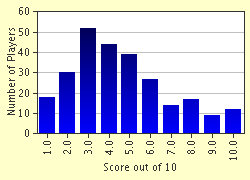
All About Stars Trivia Quiz
Extreme Star Trivia: this quiz is really a treat for those who are superstars in their knowledge about stars. Though it is a bit tough, it can really help to expand your knowledge about these luminaries. Go ahead and try this quiz. All the best!
A multiple-choice quiz
by sriram_gubbi.
Estimated time: 5 mins.
- Home
- »
- Quizzes
- »
- Science Trivia
- »
- Astronomy
- »
- Stars
